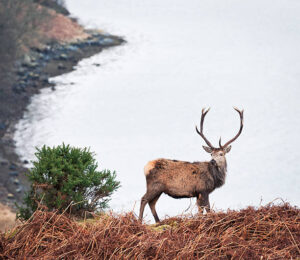
Introduction
Deer stalking is a popular outdoor activity that involves tracking, observing, and hunting deer in their natural habitat. Whether you are an experienced hunter or a beginner, deer stalking can be a challenging and rewarding experience. It requires patience, skill, knowledge of the terrain, and the behaviour and habits of the deer you are pursuing. This guide will walk you through the basics of deer stalking, including the necessary equipment, the steps to take before your hunt, and the best tactics for a successful stalk.
Equipment
The first step to successful deer stalking has the right equipment. Here is a list of essential items you will need:
Firearm: The most common firearms used for deer stalking are rifles. Make sure to choose a rifle appropriate for the size of deer you plan to hunt and the type of terrain you will be in.
Optics: Binoculars and a spotting scope are essential for locating and observing deer from a distance.
Clothing: Camouflage clothing is essential for blending into the environment and avoiding detection by the deer. Make sure to wear warm, waterproof, and quiet clothing and be comfortable for walking and stalking.
Footwear: Comfortable, waterproof, and quiet footwear is essential for a successful stalk. Make sure to choose footwear that provides good support and protection for your feet.
Pack: A pack is essential for carrying your equipment and supplies, including food, water, and first-aid supplies.
Preparation
Before you go on a deer stalk, there are several steps you should take to prepare:
Research the area: Research where you plan to stalk to learn about the terrain, the types of deer that inhabit the site, and the best times to hunt.
Get a hunting license: Ensure a hunting license before you go on your stalk. Hunting laws and regulations vary by state and country, so be sure to familiarise yourself with the rules and regulations in your area.
Plan your route: Plan your route before you set out on your stalk to ensure that you can cover the most ground and maximise your chances of success.
Practice your shooting: Practice your shooting before you go on your stalk. This will help you to develop the skills and confidence you need to make an accurate shot when the opportunity presents itself.
Tactics
Once you are out on your deer stalk, there are several tactics you can use to increase your chances of success:
Use cover: Use cover to conceal yourself from the deer. This can be anything from natural covers, such as trees and bushes, to man-made structures, such as walls and fences.
Be quiet: Make sure to move and speak quietly to avoid detection by the deer.
Observe the wind: Pay attention to the direction of the wind and make sure to position yourself upwind of the deer to avoid alerting them to your presence.
Stay low: Stay low to the ground to reduce your profile and make yourself less visible to the deer.
Be patient: Deer stalking requires patience. It may take several hours or even days to get a shot at a deer, so stay focused and be patient.
Conclusion
Deer stalking can be a challenging and rewarding experience for hunters of all levels. Following the tips and guidelines in this guide will make you well on your way to a successful deer stalk. Remember always to follow the laws and regulations in your area, stay safe, and have fun!